Categories > Guides and Tips

Ultimate Guide to Scuba Diving in Thailand
If you’re a diving enthusiast seeking breathtaking underwater adventures, Thailand is a dream destination that offers a diverse range of dive sites and unforgettable experiences.
Scuba diving in Thailand offers an incredible underwater adventure. With a plethora of dive sites, from the stunning Similan Islands to the vibrant coral reefs of Koh Tao, there is something for every diving enthusiast.
The best time to dive varies by region, so make sure to plan accordingly.
In this comprehensive guide, we will provide you with all the information you need to plan your scuba diving trip to Thailand. From the best dive sites and seasons to essential tips and safety measures, we’ve got you covered.
Get ready to immerse yourself in the vibrant marine life, stunning coral reefs, and crystal-clear waters of Thailand as we embark on an extraordinary journey beneath the waves. Let’s dive in!
What’s so special about scuba diving in Thailand?
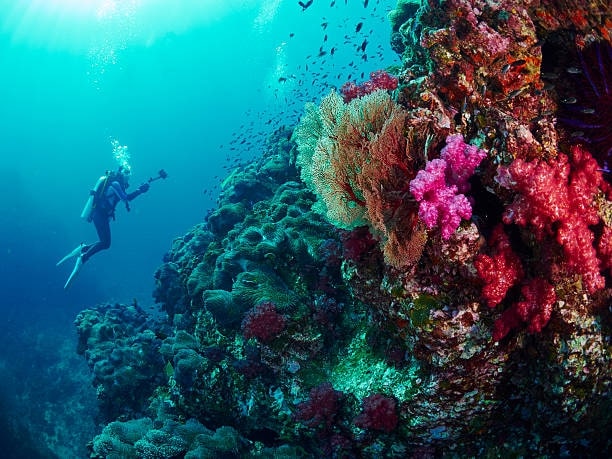
Scuba diving in Thailand offers a multitude of unique features and attractions that make it a captivating destination for divers worldwide.
Here are some of the reasons why scuba diving in Thailand is truly special:
1. Vibrant Coral Reefs: Thailand boasts stunning coral reefs that are home to an array of hard and soft corals. These coral formations provide a kaleidoscopic backdrop for your dives and offer shelter to a plethora of marine species.
2. Rare and Exotic Species: The waters of Thailand are known for their unique marine inhabitants. Dive enthusiasts have the chance to spot rare and exotic species, such as whale sharks, manta rays, seahorses, and ghost pipefish.
These encounters create unforgettable memories and awe-inspiring moments.
3. Pristine Dive Sites: Thailand offers an extensive range of dive sites suitable for divers of all levels.
From the world-famous Similan Islands in the Andaman Sea to the vibrant reefs of Koh Tao in the Gulf of Thailand, there’s a dive spot to cater to every preference and skill level.
4. Warm Tropical Waters: The tropical waters of Thailand provide a comfortable and inviting environment for divers.
With pleasant water temperatures year-round, you can enjoy longer dives without the need for thick wetsuits, allowing you to fully appreciate the underwater beauty.
5. Dive Culture and Hospitality: Thailand is renowned for its warm hospitality and friendly locals.
Dive operators and centres prioritise customer satisfaction, providing professional services and creating a welcoming atmosphere for divers from all backgrounds.
| How much does scuba diving cost in Thailand? The cost of scuba diving in Thailand can vary depending on factors such as the dive operator, location, dive site, and the type of dive package or course you choose. On average, a single dive can cost around 1,500 to 3,000 Thai Baht. Full-day dive trips or multiple-day liveaboard experiences can range from 4,000 to 10,000 Thai Baht or more. Certification courses, equipment rental, and additional services may incur additional costs. |
Best Time to Go Scuba Diving in Thailand
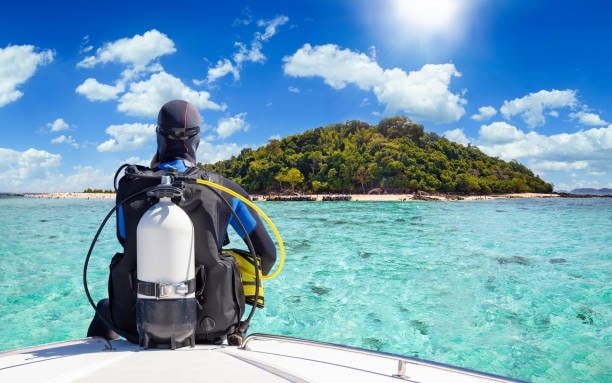
Choosing the right time to go scuba diving in Thailand can greatly enhance your diving experience.
Here are the ideal months to consider based on weather and water conditions:
1. Andaman Sea: The best time to dive in the Andaman Sea, which includes popular dive destinations like the Similan Islands, Phuket, and Krabi, is typically between November and April.
During this period, the weather is generally sunny with calm seas, providing excellent diving conditions and high visibility.
2. Gulf of Thailand: For dive sites in the Gulf of Thailand, such as Koh Tao, Koh Samui, and Koh Phangan, the prime diving season is typically from May to September.
These months offer favourable weather conditions with warm temperatures and clear waters, allowing for enjoyable diving experiences.
| Fun fact: During the peak diving seasons, the water visibility in Thailand’s dive sites can reach impressive levels, often exceeding 30 metres. |
Best Dive Sites and Locations in Thailand
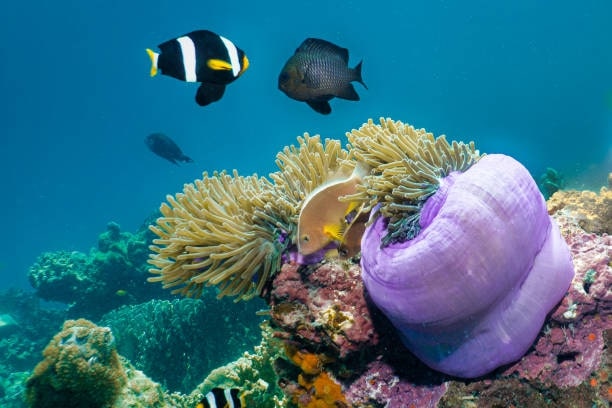
Thailand is a diver’s paradise, offering a plethora of captivating dive sites and locations.
From the vibrant coral reefs of the Andaman Sea to the diverse marine ecosystems of the Gulf of Thailand, there is an abundance of underwater wonders waiting to be explored.
In this section, we will delve into some of the best dive sites and locations that Thailand has to offer.
Andaman Sea
The Andaman Sea in Thailand is renowned for its stunning dive sites, rich marine biodiversity, and exceptional diving experiences.
Here are some notable destinations within the Andaman Sea:
Similan Islands
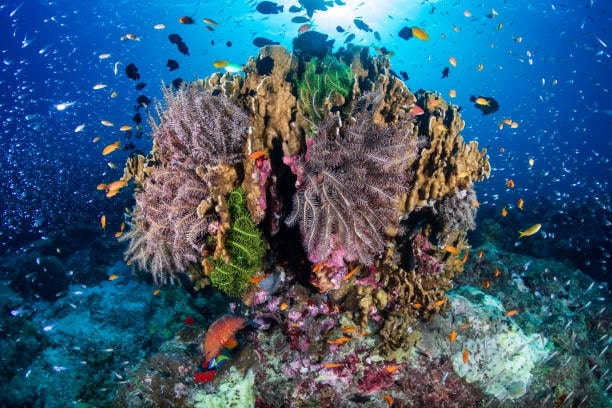
The Similan Islands, located northwest of Phuket, are considered one of the top dive destinations in Thailand.
This cluster of nine islands offers an underwater paradise with crystal-clear waters, vibrant coral reefs, and a variety of marine life. Divers can encounter reef sharks, manta rays, sea turtles, and an array of colourful tropical fish.
Koh Phi Phi
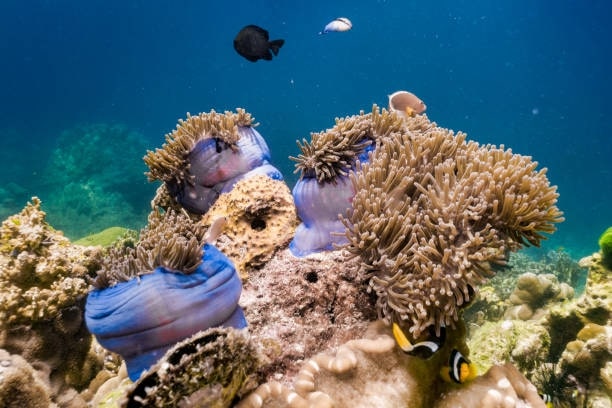
Koh Phi Phi, consisting of two main islands, Phi Phi Don and Phi Phi Leh, is another popular diving spot in the Andaman Sea. Its emerald-green waters, towering limestone cliffs, and thriving coral reefs create a picturesque setting for underwater exploration.
Divers can discover marine life such as leopard sharks, turtles, and schools of barracuda.
Hin Daeng and Hin Muang
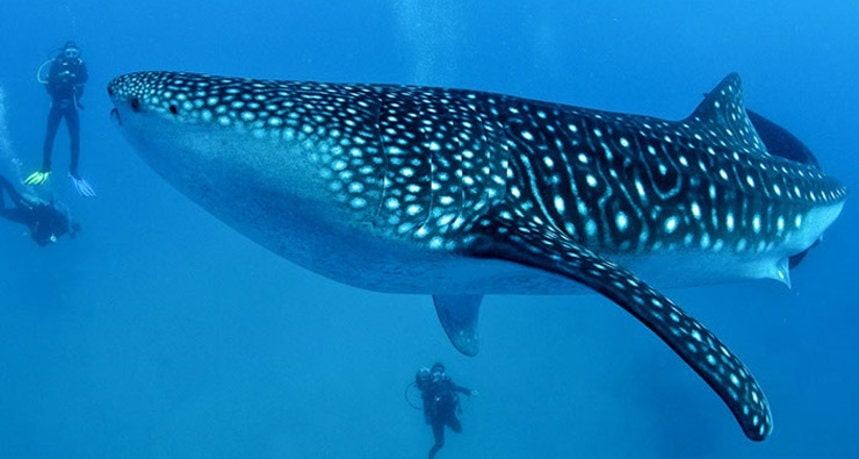
Hin Daeng and Hin Muang, located south of the Phi Phi Islands, are renowned for their vibrant coral gardens and impressive vertical walls.
These dive sites offer opportunities to encounter large pelagic species, including manta rays, whale sharks, and even occasional sightings of the elusive leopard shark.
Koh Racha Yai and Koh Racha Noi
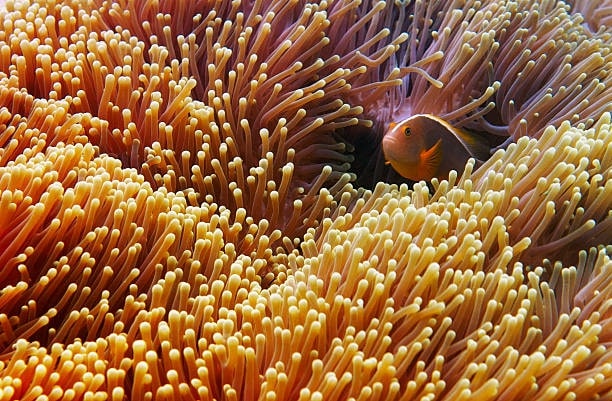
Koh Racha Yai and Koh Racha Noi, also known as the Racha Islands, are known for their clear waters, healthy coral reefs, and diverse marine life. These islands offer excellent diving conditions and are suitable for both beginners and experienced divers.
Divers can explore vibrant coral gardens, encounter reef sharks, and witness schools of tropical fish.
Gulf of Thailand
The Gulf of Thailand is a captivating region for scuba diving, offering a range of exceptional dive sites and breathtaking underwater landscapes.
Here are three notable destinations within the Gulf of Thailand:
Koh Tao
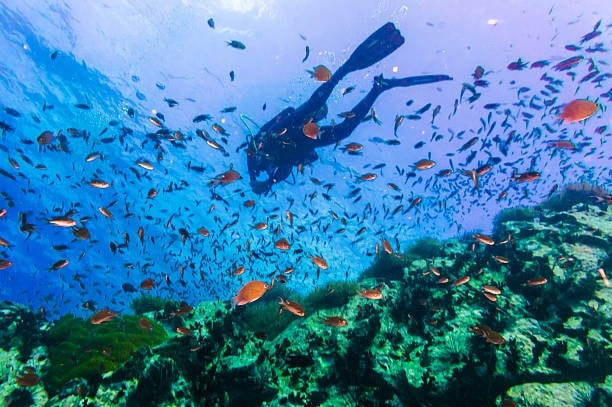
Koh Tao, also known as the “Turtle Island,” is a popular diving destination in the Gulf of Thailand. It is renowned for its calm and clear waters, making it an ideal location for both beginners and advanced divers.
The island is also home to numerous dive schools, making it a perfect place to obtain your scuba diving certification.
Sail Rock, considered one of the top dive sites in the region, features a vertical pinnacle teeming with marine life, including barracudas, trevallies, and the occasional sighting of majestic whale sharks and bull sharks.
Additionally, Chumphon Pinnacle, located near Koh Tao but accessible from Koh Phangan, showcases impressive coral formations, schools of tropical fish, and the chance to encounter larger pelagic species like whale sharks and giant groupers.
Koh Samui

One of Thailand’s most renowned tourist destinations, Koh Samui also offers excellent diving opportunities. It features several dive sites suitable for divers of all levels, from shallow coral gardens to deeper, more adventurous dive spots.
Koh Samui’s underwater world showcases an array of colourful coral formations, reef fish, and fascinating macro life.
Diving in Koh Samui allows you to explore captivating sites while enjoying the convenience of a well-developed tourist infrastructure.
Koh Pha-ngan
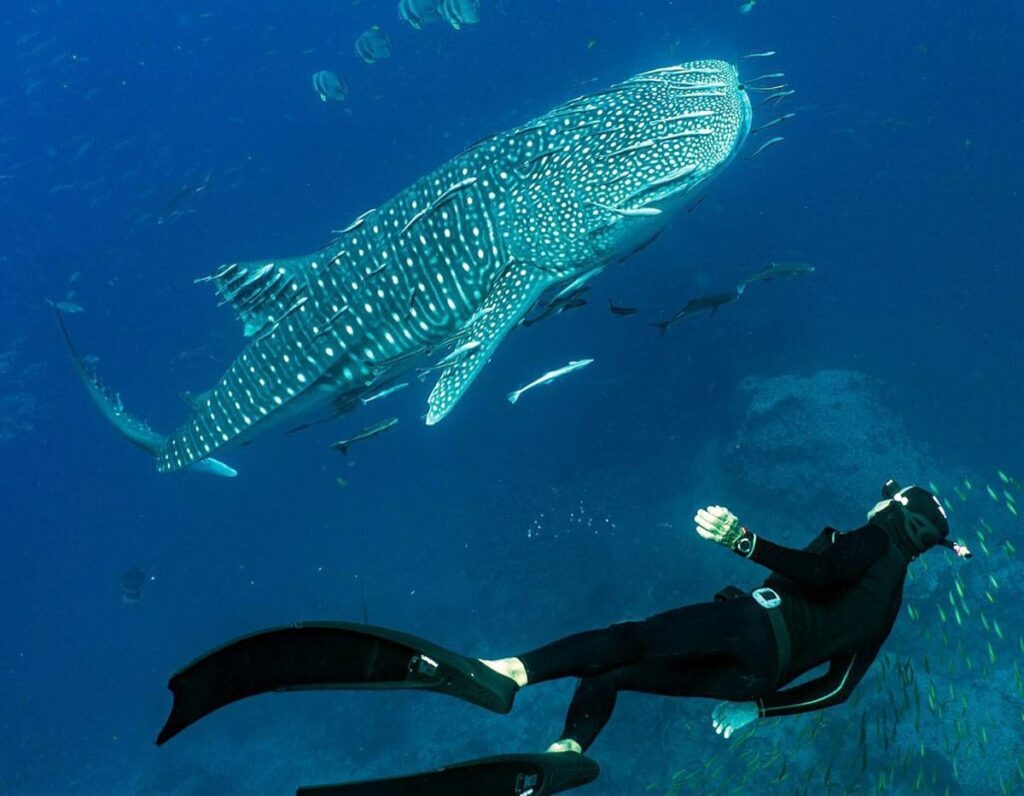
Koh Pha-ngan offers both stunning beaches and exciting dive sites for scuba diving enthusiasts. While it is primarily known for its lively nightlife and famous Full Moon Party, the island also provides opportunities to explore the underwater world.
Koh Ma offers diverse marine biodiversity, including reef sharks, moray eels, colourful angelfish, and even turtles, making Koh Phangan a worthwhile destination for divers of varying skill levels.
Types of Diving in Thailand
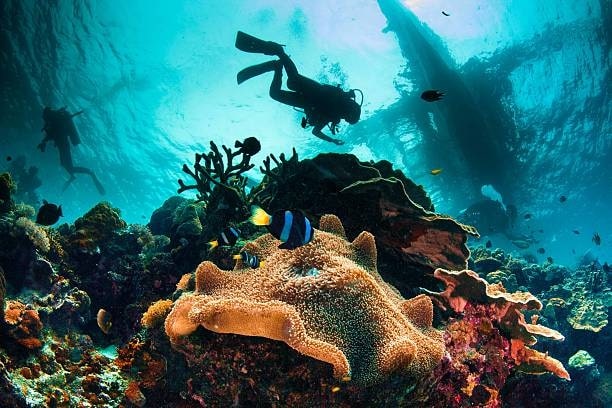
Thailand offers a diverse range of diving experiences, catering to divers of all levels and interests.
Whether you’re a beginner looking to get certified, an experienced diver seeking thrilling underwater adventures, or someone who wants to explore unique diving specialties, Thailand has something for everyone.
Here are some of the types of diving you can enjoy in Thailand:
1. Recreational Diving: Recreational diving is the most common type of diving in Thailand. It includes exploring coral reefs, encountering marine life, and enjoying the beauty of the underwater world.
2. Wreck Diving: Thailand is home to several fascinating wreck sites that attract experienced divers. The most famous wreck is the HTMS Sattakut, a former Thai navy ship intentionally sunk to create an artificial reef.
Exploring the wreckage and observing the marine life that has made it their home is a thrilling adventure for wreck diving enthusiasts.
3: Drift Diving: During a drift dive, divers typically descend at a designated entry point and let the current carry them along the planned route. In Thailand, drift diving is particularly popular in locations such as the Similan Islands, Koh Phi Phi, and other dive sites in the Andaman Sea.
Instead of swimming against the current, divers go with the flow, which allows them to cover more distance and experience the sensation of gliding through the water.
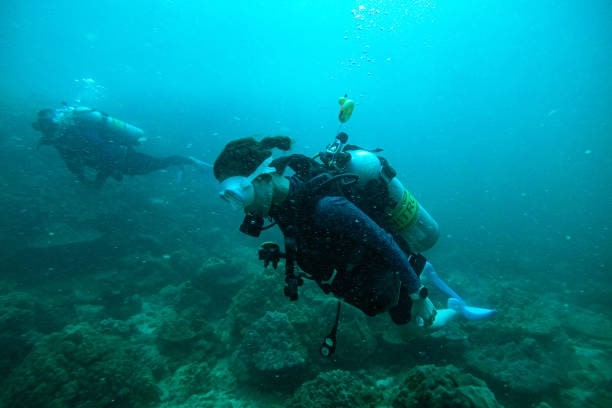
4. Cave Diving: For experienced divers with proper training and certification, Thailand offers opportunities for cave diving.
The country has stunning underwater cave systems, such as Song Hong Cave which offers unique and challenging diving experiences.
5. Night Diving: Thailand’s vibrant underwater world takes on a whole new dimension during night dives.
Night diving allows you to witness nocturnal marine species, observe their behaviour, and experience the mysterious ambiance of the underwater realm after dark. Many dive sites in Thailand offer night diving options for certified divers.
Liveaboard Diving in Thailand
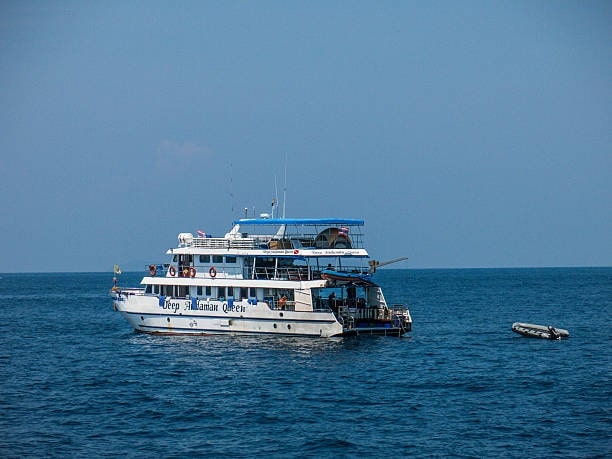
Liveaboard diving in Thailand offers a unique and immersive scuba diving experience for enthusiasts seeking to explore remote dive sites and maximise their time underwater.
A liveaboard is a diving vessel equipped with comfortable accommodations, facilities, and dive equipment, allowing divers to stay on board and access remote dive sites that are often inaccessible by day tours.
Here’s why liveaboard diving in Thailand is an exceptional adventure:
1. Access to Remote Dive Sites: Liveaboard trips in Thailand take you to some of the most remote and pristine dive sites in the region.
2. Extended Dive Time: Liveaboard trips offer extended dive time compared to day trips. With multiple dives scheduled throughout the day and night, you have ample opportunities to immerse yourself in the underwater world, observe marine life behaviour, and explore different depths and environments.
3. Dive with Like-Minded Divers: Liveaboards attract divers who are passionate about scuba diving, creating a sense of camaraderie among fellow enthusiasts.
Sharing diving experiences, stories, and tips with like-minded divers adds to the overall enjoyment and creates lasting connections.
4. Comfort and Convenience: Liveaboard vessels are designed to provide comfort and convenience during your diving journey.
With comfortable cabins, delicious meals, and dedicated dive decks, you can relax and focus on your dives without worrying about logistics or transportation between dive sites.
Essential Tips for a Safe Diving Experience in Thailand
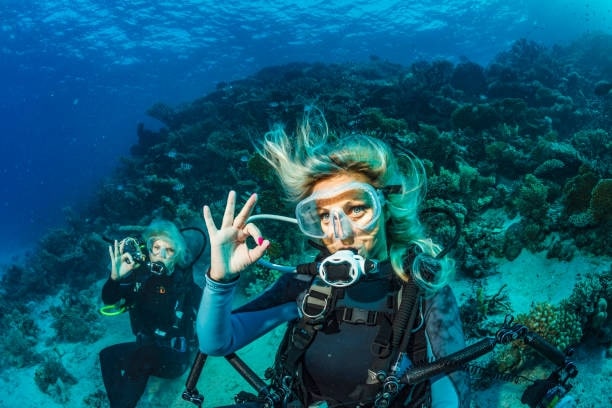
When embarking on a scuba diving adventure in Thailand, it’s important to prioritise safety, be well-prepared, and mindful of certain considerations to ensure a memorable and enjoyable experience.
Here are some essential tips to keep in mind:
1. Choose the right scuba diving school: To enhance your diving experience, opt for a reputable scuba diving school in Thailand.
Some well-regarded options include PADI-certified dive centres such as Blue Planet Divers in Koh Lanta, Big Blue Diving in Koh Tao, and Dive Asia in Phuket.
These schools can provide professional training and guidance for divers of all levels.
2. Stay hydrated and fuel up: Thailand’s tropical climate and physical exertion involved in diving can lead to dehydration. Drink plenty of water before and after dives to stay hydrated.
Additionally, fuel up with nutritious meals to maintain your energy levels throughout the day.
3. Carry appropriate dive insurance: Prior to your dive trip to Thailand, ensure that you have comprehensive dive insurance that covers medical expenses and emergency evacuation in case of any diving-related incidents or accidents.
4. Explore the secluded beaches: Thailand has many secluded beaches that are worth exploring. Take advantage of the seclusion offered by liveaboard trips and make time to visit the beautiful beaches during surface intervals.
Enjoy the tranquillity and natural beauty of these pristine locations, adding an extra element of relaxation to your diving adventure.

5. Familiarise yourself with local regulations and marine park rules: Different dive sites in Thailand may have specific regulations and marine park rules in place to protect the environment.
6. Be aware of local conditions: Thailand’s dive sites can have varying conditions, including currents and visibility. Stay informed about the specific dive site conditions and be prepared for any challenges you may encounter.
7. Cater to dietary requirements: If you have specific dietary needs or preferences, inform your liveaboard or dive operator in advance.
While the food served is usually standard Thai cuisine, if you’re not a fan of spicy or flavorful food, consider bringing along some alternatives to ensure a satisfying meal experience.
8. Plan your dives according to the tides: Some dive sites in Thailand, especially those with strong currents, are best explored during specific tidal conditions.
Consult with local dive operators or experienced divers to determine the ideal times for diving at different locations based on the tides.





